What Are Deliverables In Project Management?
Projects produce deliverables, which are simply the results of project activities. Project deliverables can be big or small, and their number varies depending on the project. They’re agreed upon by the project management team and stakeholders during the project planning phase.
Put another way, there are inputs and outputs in any type of project. Inputs are what you put into the project, such as data, resources, etc., and the outcomes are the deliverables. Again, those deliverables vary greatly. For example, a project deliverable can be either a product or service or it can be the documentation that’s part of the project closure.
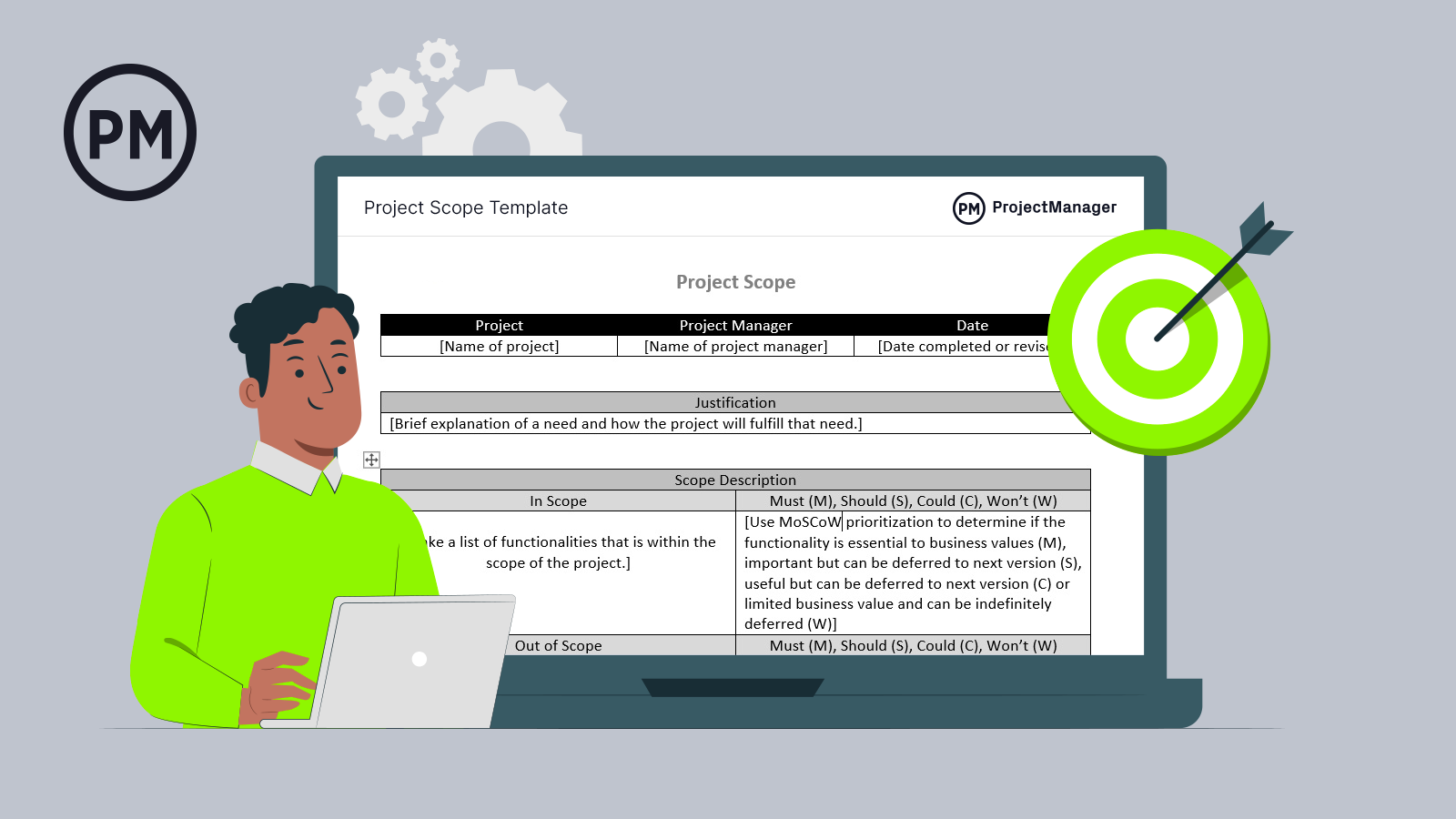
Get your free
Project Scope Template
Use this free Project Scope Template for Word to manage your projects better.
Project Deliverables vs. Project Milestones
It’s understandable to confuse a project deliverable with a project milestone. A deliverable, after all, is an outcome and to some extent so is a project milestone. But they’re not the same thing. Let’s define a project milestone to make that clearer.
A project milestone is used to mark something big in the project, so a milestone could occur with a deliverable. But milestones are often used to indicate the completion of a project phase. You wouldn’t call moving from project planning to project execution a deliverable, though it’s made up of deliverables, which usually come at the end of a task.
Remember, a deliverable is quantifiable. It’s something that was created over time, with resources and effort. A project milestone, while encompassing deliverables, is a marker in time to indicate the transition from one thing to another.
Project management tools such as Gantt charts, kanban boards and project calendars can help you track the progress of your team on the completion of project deliverables. In addition to these project management tools, ProjectManager has one-click reporting that captures data on project variance, time, cost and more. These reports can be shared as PDF attachments or printed depending on the stakeholder’s preference. Better yet, every report can be filtered to show only the data stakeholders want to see about project deliverables. Get started for free today.
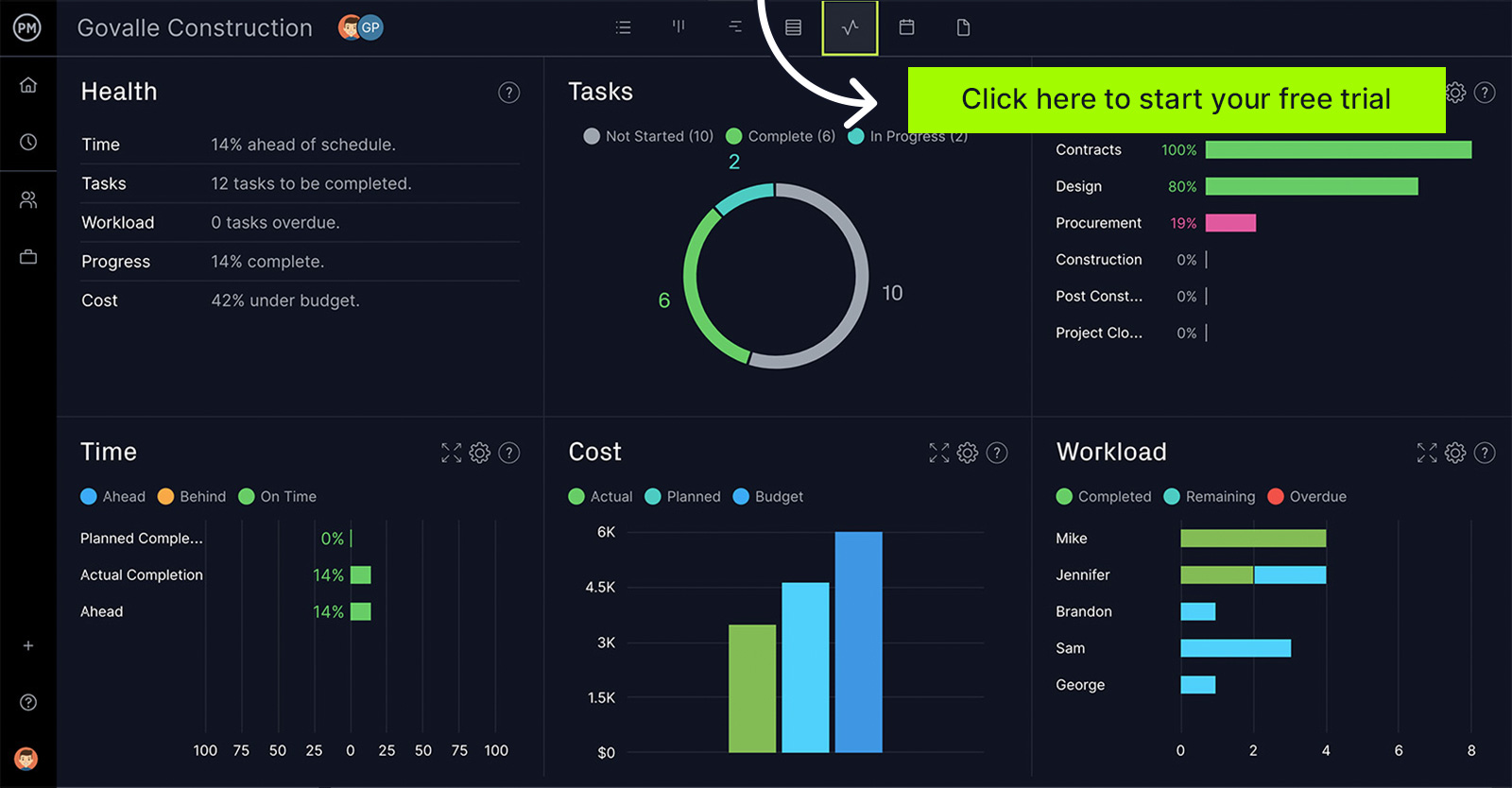
Tangible & Intangible Deliverables
A tangible deliverable is one of those project outcomes that are concrete. That is, they have form and substance. An example of a tangible deliverable would be things such as a building, the product of a manufacturing line or even a magazine or newspaper.
An intangible deliverable is a measurable outcome but one that is conceptual rather than one you can touch or hold in your hands. Some examples of intangible deliverables would be a training program for your project team so that they can learn how to use a new software tool or piece of equipment.
How to Identify Project Deliverables Using a Work Breakdown Structure
When planning a project, especially its schedule, you need a work breakdown structure (WBS), which is a tool that identifies all the tangible deliverables in a project. From that, you can determine the tasks that’ll produce those deliverables. Use our free work breakdown structure template for Excel to help you identify all the deliverables in your project and ensure you’re creating a thorough and complete schedule.
1. List All Your Project Activities
In a WBS, project activities are the “how” of a project. They make up the work packages or steps that you’ll have to take to produce project deliverables. Therefore, you’ll want to list all the tasks that will be needed to deliver the project.
2. Group Tasks By Project Phase
At this point, you’ll want to break up the tasks into phases. There are five project phases in project management: initiation, planning, execution, control and closeout. Now, take all the activities you identified and organize them into their corresponding project phases.
3. Determine Which Project Tasks Will Produce Deliverables
Deliverables are the outcomes you want from the activities and the tasks that you listed. Using what you collected in step one, determine the deliverable from each of those activities.
Here’s some expert advice to further explain the difference between project deliverables and project milestones. In the video below, Jennifer Bridges, professional project manager (PMP) explains what project deliverables are and how they’re created throughout the course of a project.
Who Is Responsible for Deliverables?
There isn’t one role solely responsible for project deliverables as many team members are involved at various stages throughout the project. The project manager, however, has ultimate responsibility for ensuring that all deliverables are completed and meet the needed standards. The project manager helps define and document deliverables, monitoring progress and facilitating communication along the way.
Project team members focus on completing specific deliverables. For example, they work to complete tasks according to project specifications and provide regular progress updates to the project manager. Team members will collaborate as needed.
The client or the project sponsor is responsible for reviewing and accepting the final deliverables. In some cases, they may provide feedback throughout the project to ensure the deliverables are meeting the needed expectations. When the project wraps up, they will formally approve and sign off on the completed deliverables.

What Project Documents Help Define What Your Project Deliverables Are?
All projects have one thing in common: documents. It’s no surprise, then, that there are project management documents that can help you define project deliverables. Here are a couple of examples.
Project Charter
A project charter is a short document that explains the reason for the project and, once approved, greenlights the project. Part of the project charter is the implementation plan, which is a roadmap for executing the project. This document includes key project deliverables.
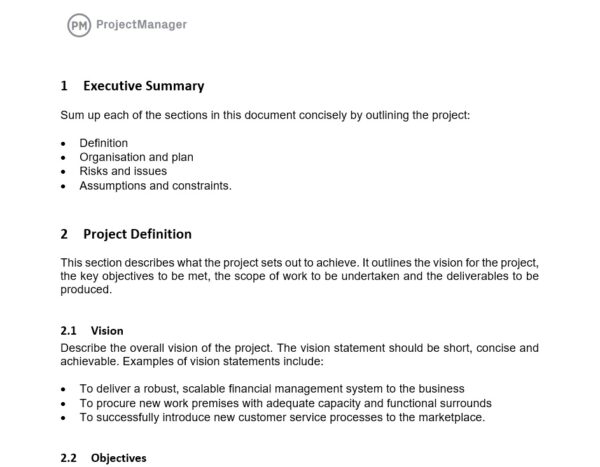
Project Scope Statement
The project scope statement lists the final deliverable for the project, whether that’s a product or service. All deliverables in the project will be described in detail in the project scope statement as it helps avoid confusion with stakeholders later in the project.

Work Breakdown Structure
A work breakdown structure is a project management graph that allows project managers to break down the scope of their project into all the individual tasks and deliverables that must be completed to deliver the project.
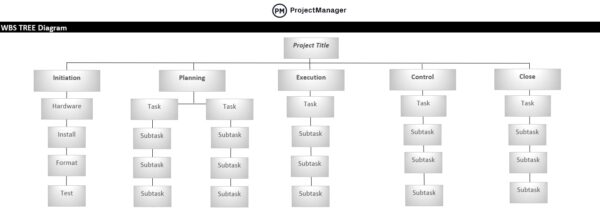
Project Deliverables Examples
As you might imagine, there are as many deliverables as there are projects. Deliverables aren’t only the final product or service, though that’s often how many think of them. There are deliverables produced throughout the project. Here are a few types of deliverables.
1. Project Documentation Deliverables
A project deliverable is an outcome of a task, so project documents such as a project plan, a project charter or a project scope statement can be considered project deliverables. Besides key project documents like those, project management reports like status reports, budget reports or progress reports are also deliverables.
2. Services and Outcomes Deliverables
Services and outcomes can be examples of a project deliverable that applies to various industries such as marketing, IT and professional services. Examples of this type of deliverable include training sessions, workshops, consulting services, strategic plans, recommendations and more.
3. Data and Information Deliverables
Project deliverables often revolve around data sets. These sets may include collected and analyzed data, compiled market analysis reports or business intelligence reports generated using data analysis.
Project vs. Product Deliverables
There’s a distinction between project and product deliverables. Project deliverables are such outputs as the project plans, project reports and even meeting minutes. Product deliverables, on the other hand, could be hardware, software, mobile applications, contracts, or even test assessment results.
The deliverables that clients and stakeholders expect at the end of the project are the product or service, of course, but there’s also paperwork, as noted. These documents, when completed, are deliverables that clients and stakeholders need to evaluate the progress or completion of the project.
This paperwork can include:
- Signed contracts
- Finalized expense reports
- Other types of project reports show how work is proceeding versus project plan estimations
Deliverables can vary according to the project’s specifications and the stakeholders’ requirements. But all clients and stakeholders want deliverables that thoroughly wrap up the project at its closure and measure performance against expectations throughout the project. When defining project deliverables, it’s important to use project planning software such as ProjectManager to create a project timeline where you can easily visualize all your project tasks, assign work and track time.
5 Tips & Techniques for Tracking Deliverables
It’s impossible to meet the required project standards without tracking deliverables. Here are a few tips and techniques to implement in an upcoming project.
- Establish Clear Deliverable Definitions and Acceptance Criteria: Before kicking off the project, make sure that each deliverable, including its scope, requirements and acceptance criteria are defined. To do so, create a deliverable definition document outlining the purpose, format, specifications and any relevant standards. This process may require getting stakeholder approval.
- Use a Deliverable Tracking Matrix or Log: A centralized tracking system can go a long way in tracking project deliverables. For example, a tracking spreadsheet or database can track the deliverable’s name, description, owner, start and due dates, status, acceptance criteria and notes. Update the matrix regularly to ensure accuracy.
- Conduct Regular Progress Reviews & Status Meetings: Regular meetings are a great way to address any issues and check on the status of each deliverable. Identify any roadblocks and assign action items if a particular deliverable is at a standstill. Visual aids like Gantt charts are especially helpful to visually represent progress.
- Implement Formal Deliverable Reviews & Acceptance Procedures: A formal review and acceptance process can ensure deliverables meet stakeholder expectations. Formal reviews with stakeholders can assess deliverable quality while acceptance checklists can ensure each deliverable has been thoroughly reviewed. Be sure to document this process.
- Leverage Project Management Software: Project management software can automate deliverable tracking and reporting without the stress of keeping static documentation updated. For example, software has task management features to assign tasks, set due dates and track progress. Use it to create deliverable milestones and generate progress reports to share with stakeholders.
How to Present Project Deliverables to Stakeholders
Project managers and project management offices (PMOs) make reports about project deliverables to keep clients and stakeholders updated on their progress throughout the project life cycle. Different stakeholders have different needs, so flexibility and customization are important for effective reporting. To meet their needs, project management software must be able to filter the many data inputs to deliver the proper output.
ProjectManager Helps You to Report Progress on Project Deliverables
Creating deliverables for project management and reporting on them is easy using these reports:
- Project status report
- Variance report
- Timesheet report
Compiling project status reports is a great way to:
- Illustrate for stakeholders how work is proceeding
- Show which team members are carrying the heaviest loads and if adjustments need to be made
- Outline room for improvement as the project moves ahead or at closure
Status Report
Our project status reports are highly customizable, with options to select a variety of columns and data sets to extract exactly the information you’re seeking on the project’s status and the completion of project deliverables.

Below is an example of a project status report that can be generated with several variables including work breakdown structure (WBS), planned start and finish dates, planned hours, percent complete, task assignments, start dates and actual hours:
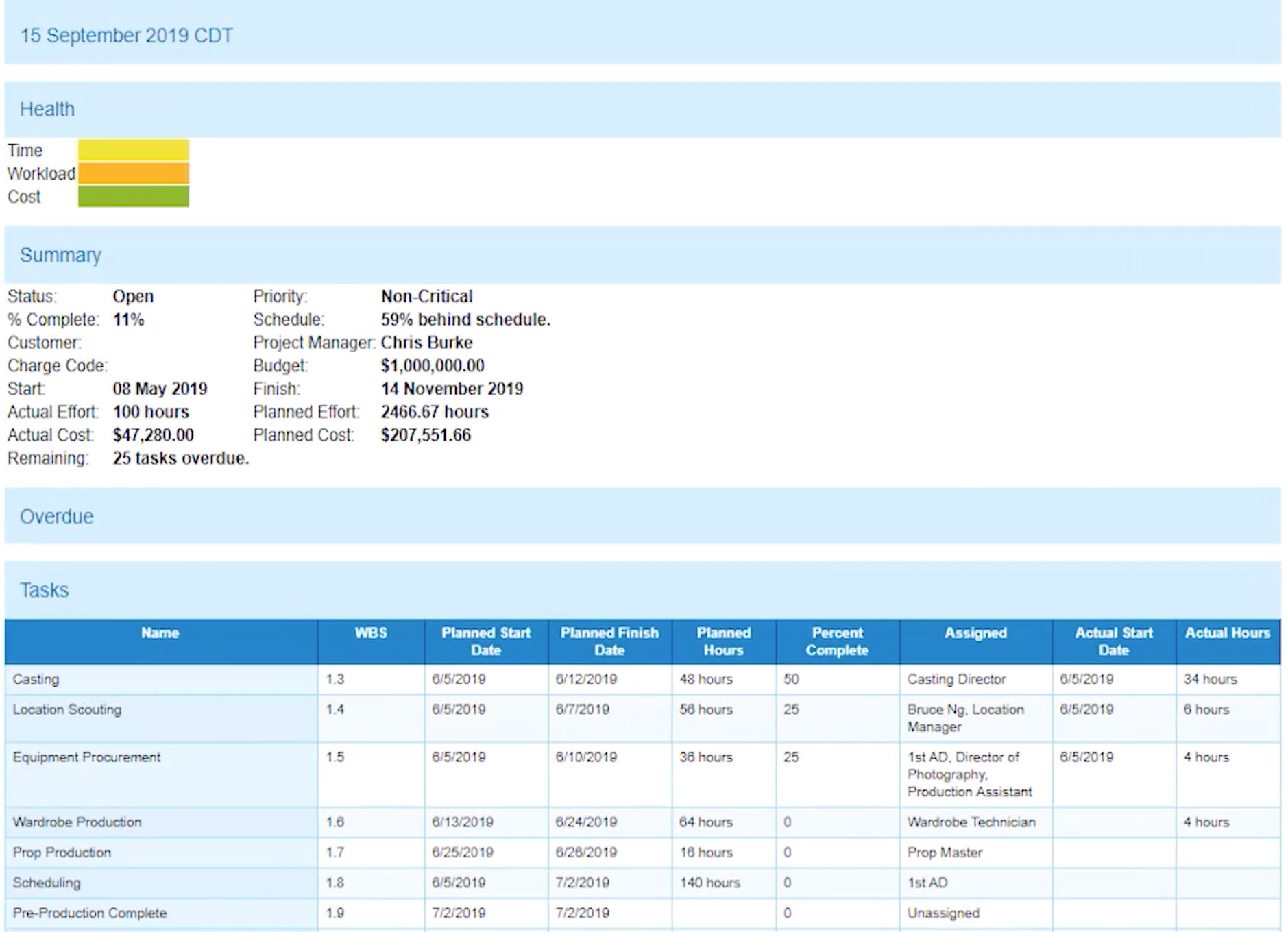
Variance Report
Variance reports can be customized to include only summary tasks, completion percentages and a comparison of the actual progress of the project versus the forecasted progress.
The resulting report shows a side-by-side comparison of predicted start and finish dates, predicted hours versus actual hours spent and that difference and the difference in predicted project duration and how long it’s actually taken to date:

Timesheet Report
Timesheet reports provide a bird’s-eye view of each individual’s hours worked on a project.
They also show:
- Assignment of tasks to team members and the importance of those tasks
- Each individual’s hourly rate
- Many other factors related to resources, time and cost
The timesheet shows the person submitting the time, the date of submission, how many individual hours they worked during the selected timeframe, their WBS and how many hours they have remaining in the selected timeframe:
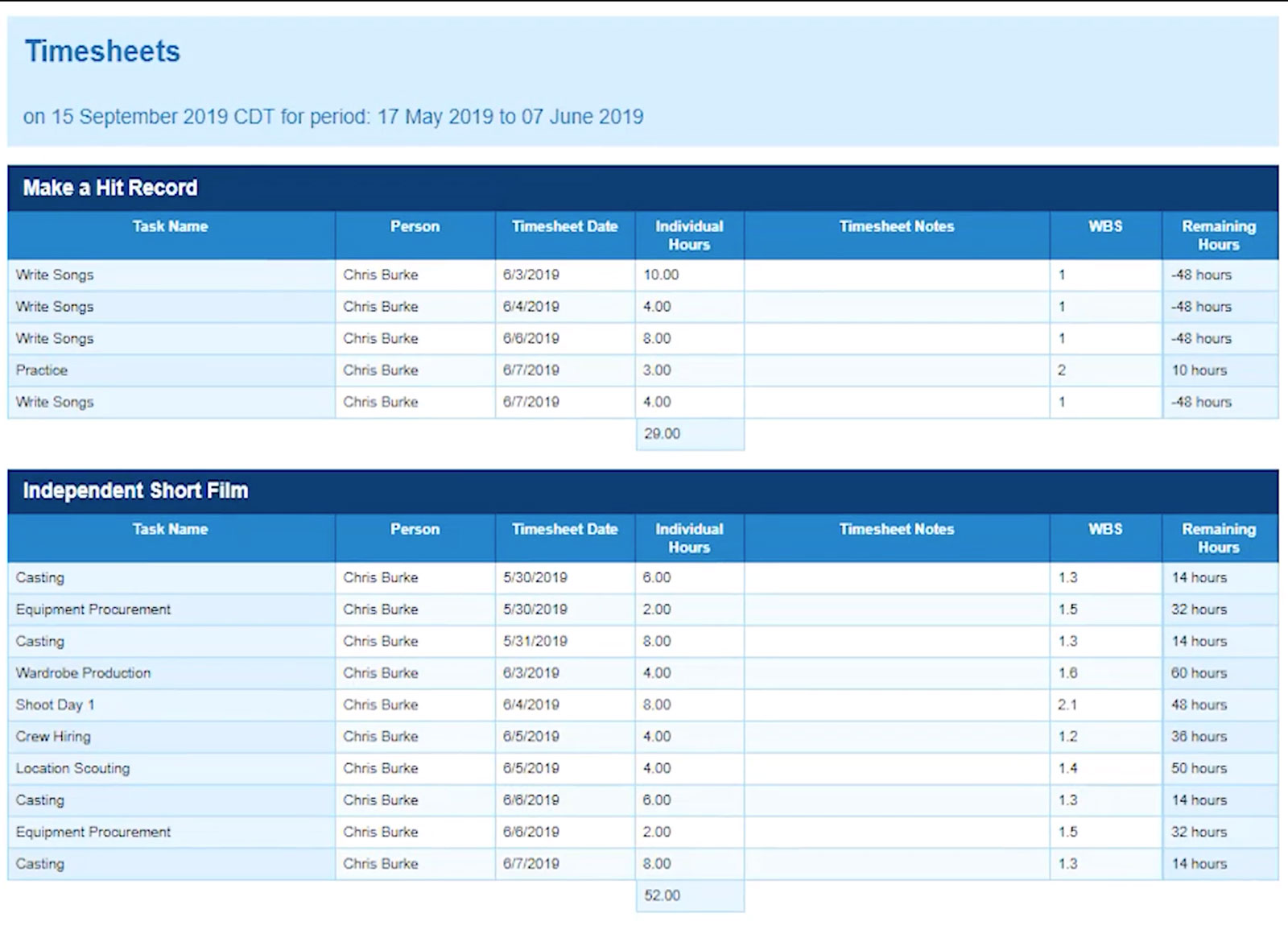
Above is an example of a timesheet for one person working on multiple projects during one timeframe.
Consistent use of these three reports helps keep your team on time, under budget and within scope when it comes to the completion of project deliverables. Lessons learned in libraries can also be a great tool to help build upon successes and avoid duplicating mistakes in future projects.
Lessons Learned Libraries
Creating a lessons-learned library is a great way to compile takeaways from projects. It’s a central place to view work that exceeded expectations and also works that could have been better. As a new project kicks off, project managers use this resource to plan for known roadblocks.
ProjectManager acts as an online hub for all your project documents, keeping you organized and everything at your fingertips whether you’re in the office, the field or at home. Use our list view to collect all your reports on deliverables. More than just a to-do list, you can assign, comment and track progress on each item. Save old projects for historical data when planning new ones. Our customized tags make it easy for your to catalog your work so it’s always easy to find.

Related Content
There’s a lot to learn before you can plan, schedule, execute and deliver projects successfully. For this reason, we’ve created dozens of blogs, templates, ebooks and videos on the most important topics in project management. Here are some of them.
- 20+ Project Management Tools & Techniques
- Best Project Management Certifications
- Project Management Basics: Definitions, Methods and Tools
- 100+ Project Management Terms: PM Terminology
- PMBOK: The Project Management Body of Knowledge Explained
- Top 15 Project Management Methodologies: An Overview
- Best Project Management Charts for Project Planning
- ¿Qué Son los Entregables de un Proyecto? Con Ejemplos
- Qu’est-ce qu’un livrable de projet ? Définition et exemples
- Was ist ein Projektergebnis? Definition, Beispiele & mehr
Stakeholders and clients can request deliverables at a moment’s notice. Being able to shift on the fly and produce what your client wants requires a strong project management tool to keep things organized and up-to-date. ProjectManager is all online, so team members can collaborate on deliverables and rapidly prepare the best possible outputs. Try our award-winning software with this free 30-day trial.

